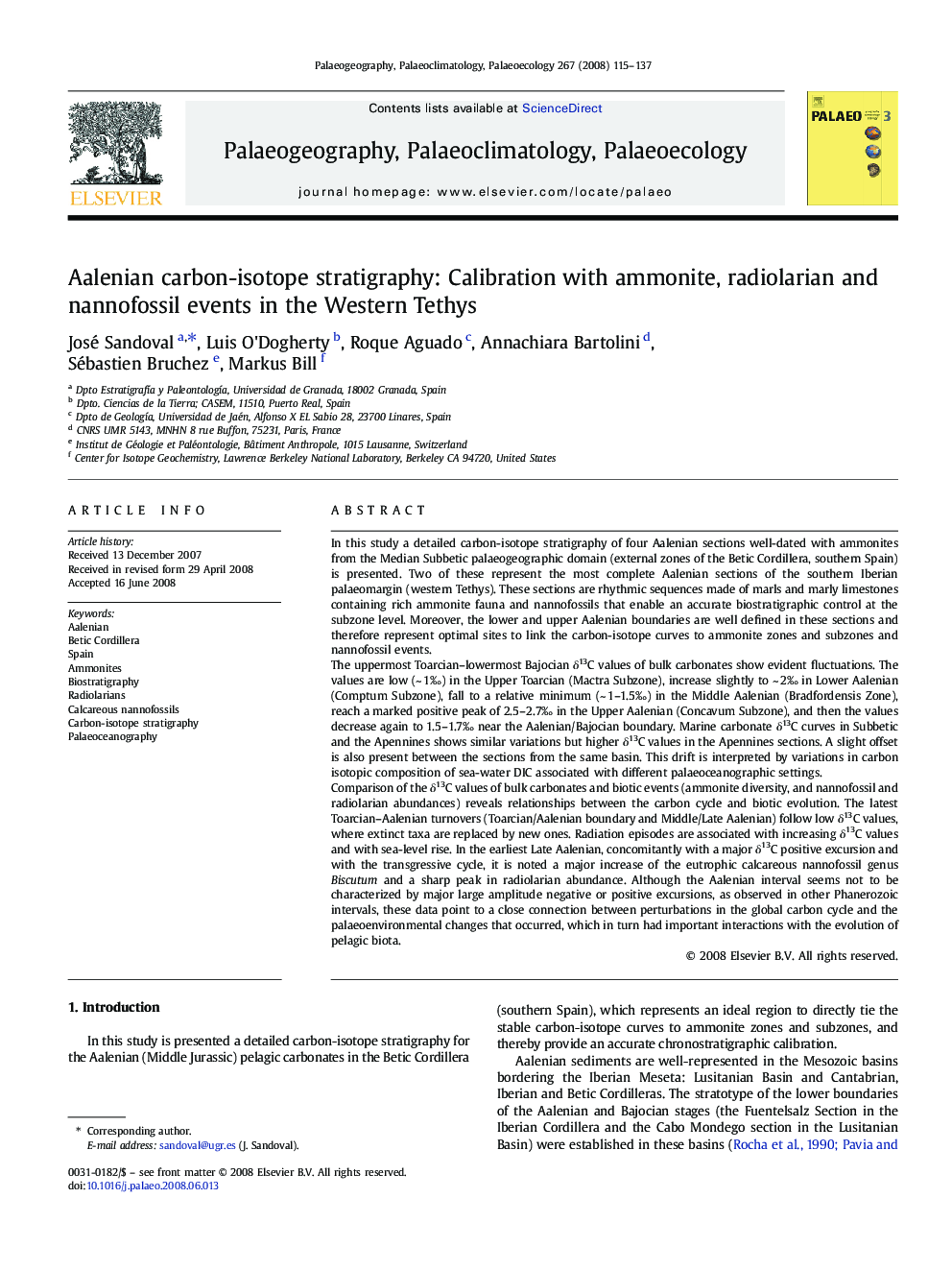| کد مقاله | کد نشریه | سال انتشار | مقاله انگلیسی | نسخه تمام متن |
|---|---|---|---|---|
| 4468372 | 1622320 | 2008 | 23 صفحه PDF | دانلود رایگان |

In this study a detailed carbon-isotope stratigraphy of four Aalenian sections well-dated with ammonites from the Median Subbetic palaeogeographic domain (external zones of the Betic Cordillera, southern Spain) is presented. Two of these represent the most complete Aalenian sections of the southern Iberian palaeomargin (western Tethys). These sections are rhythmic sequences made of marls and marly limestones containing rich ammonite fauna and nannofossils that enable an accurate biostratigraphic control at the subzone level. Moreover, the lower and upper Aalenian boundaries are well defined in these sections and therefore represent optimal sites to link the carbon-isotope curves to ammonite zones and subzones and nannofossil events.The uppermost Toarcian–lowermost Bajocian δ13C values of bulk carbonates show evident fluctuations. The values are low (~ 1‰) in the Upper Toarcian (Mactra Subzone), increase slightly to ~ 2‰ in Lower Aalenian (Comptum Subzone), fall to a relative minimum (~ 1–1.5‰) in the Middle Aalenian (Bradfordensis Zone), reach a marked positive peak of 2.5–2.7‰ in the Upper Aalenian (Concavum Subzone), and then the values decrease again to 1.5–1.7‰ near the Aalenian/Bajocian boundary. Marine carbonate δ13C curves in Subbetic and the Apennines shows similar variations but higher δ13C values in the Apennines sections. A slight offset is also present between the sections from the same basin. This drift is interpreted by variations in carbon isotopic composition of sea-water DIC associated with different palaeoceanographic settings.Comparison of the δ13C values of bulk carbonates and biotic events (ammonite diversity, and nannofossil and radiolarian abundances) reveals relationships between the carbon cycle and biotic evolution. The latest Toarcian–Aalenian turnovers (Toarcian/Aalenian boundary and Middle/Late Aalenian) follow low δ13C values, where extinct taxa are replaced by new ones. Radiation episodes are associated with increasing δ13C values and with sea-level rise. In the earliest Late Aalenian, concomitantly with a major δ13C positive excursion and with the transgressive cycle, it is noted a major increase of the eutrophic calcareous nannofossil genus Biscutum and a sharp peak in radiolarian abundance. Although the Aalenian interval seems not to be characterized by major large amplitude negative or positive excursions, as observed in other Phanerozoic intervals, these data point to a close connection between perturbations in the global carbon cycle and the palaeoenvironmental changes that occurred, which in turn had important interactions with the evolution of pelagic biota.
Journal: Palaeogeography, Palaeoclimatology, Palaeoecology - Volume 267, Issues 1–2, 19 September 2008, Pages 115–137